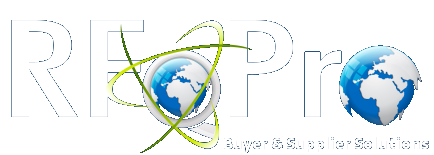Request for Proposal – RFP:
What is a RFP and how and when should a procurement professional utilize it. A Request for Proposal (RFP) is an invitation to Vendors to submit a written offer to supply services or a solution to a requirement.
So, you have an internal need or requirement and there is nobody qualified in the organization to manage the requirement or possibly resolve it. You need to outsource the job and now might be when your employer requests you issue a RFP.
The RFP is then written to illicit positive feedback, therefore, needs to be designed professionally and must clearly identify the actual work you are hoping to farm out and the expectations.
More specifically, it is written to ensure suppliers don’t assume the entire risk. In manufacturing, this might mean the buffering of raw materials and finished goods to meet the final demand for goods. In a services type RFP, it should ensure the consultant has a clear indication of the amount of time and or resources he or she is expected to put into the project.
A RFP is different than a Request for Quote (RFQ). With a RFQ the Vendor can be certain as to the supply risk. For example, like having enough capacity to ensure supplies and goods at the right quantity, quality, time, and cost. We need 12 pairs of leather gloves and here is the part number. This RFQ is straight forward and comparing costs are for the most part simple. A RFP is not necessarily so cut and dry and quite often asks the Vendor to propose a solution.
Okay let us get back to writing the RFP. The Buyer will need the Vendor to define the specific monetary and/or service obligations which make up the offer. It is the Purchasing departments job to make the RFP available to several suppliers to respond with a competitive proposal or a solution to your request.
What to include – the Request for Proposal should include a short but detailed description or specification of the products or services which are required. This can also be identified as scope. As with many business writing efforts, an effective request for proposal will begin by declaring the purpose for the document. Even the most casual of formats for a RFP will incorporate details of this nature. In comparison, a highly structured format informs the applicant precisely how to arrange data in a manner that is certain to have significance to the issuing business. So, it is vital to be clear on the scope of work and try not to cloud the document with legal terminology. In other words, leave all the legal terms to the end of the document as this might deter recipients or quality vendors from offering. The higher the risk the more terms and conditions might be required but again not all RFP’s warrant forty pages of legal requirements.
